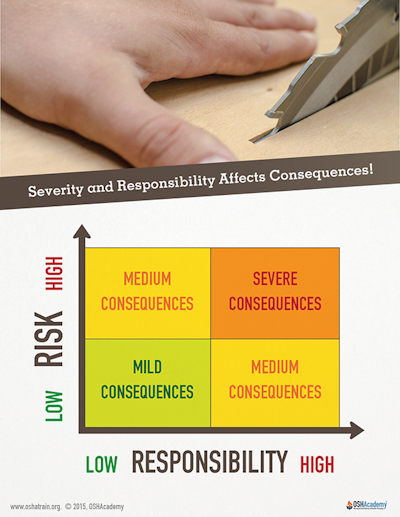How Severity and Responsibility Affect Consequences
- Severity: Consequences should increase with the severity of the potential injury or illness that might result from the behavior. If an employee is performing an unsafe work practice that could result in a fatal injury to himself or another employee, that certainly warrants a severe consequence. On the other hand, an employee who performs a behavior that violates a safety rule, yet will not result in an injury or illness, a less severe consequence is more appropriate.
- Responsibility: Consequences should increase with the level of responsibility of the person performing the behavior. If an employee neglects to perform a safe work practice such as wearing ear protection, a safety rule has been violated and discipline may be in order. However, if a supervisor or manager neglects to wear the ear protection, we're not just talking about violating a safety rule. That safety rule has, in effect, been legally transformed from a mandatory requirement into a discretionary guideline. Consequently, as a guideline, it is not legally auditable or enforceable.
In the examples above, a more severe level of discipline would be in order for the supervisor because the supervisor, in effect, gives permission for all employees to violate the safety rules. Consequently, the negative impact on the safety of employees has the potential to be much greater when the supervisor violates a safety rule.
On the other hand, if a supervisor or manager does something positive, the net impact will likely be greater than that of one of his or her employees. Consequently, more significant positive consequences would certainly be appropriate.
Consistent Application of Consequences
To build a high level of trust between management and labor, accountability must be applied consistently at all levels of the organization: up and down, and across functions. Every supervisor and manager must be held accountable in the same fair manner consistent with employees. If labor perceives the accountability system as applying only to them, they will naturally consider it unfair: the primary failure mode for accountability systems.
Knowledge Check Choose the best answer for the question.
2-8. What occurs when a supervisor ignores an employee who fails to follow fall protection rules when required?
You forgot to answer the question!

